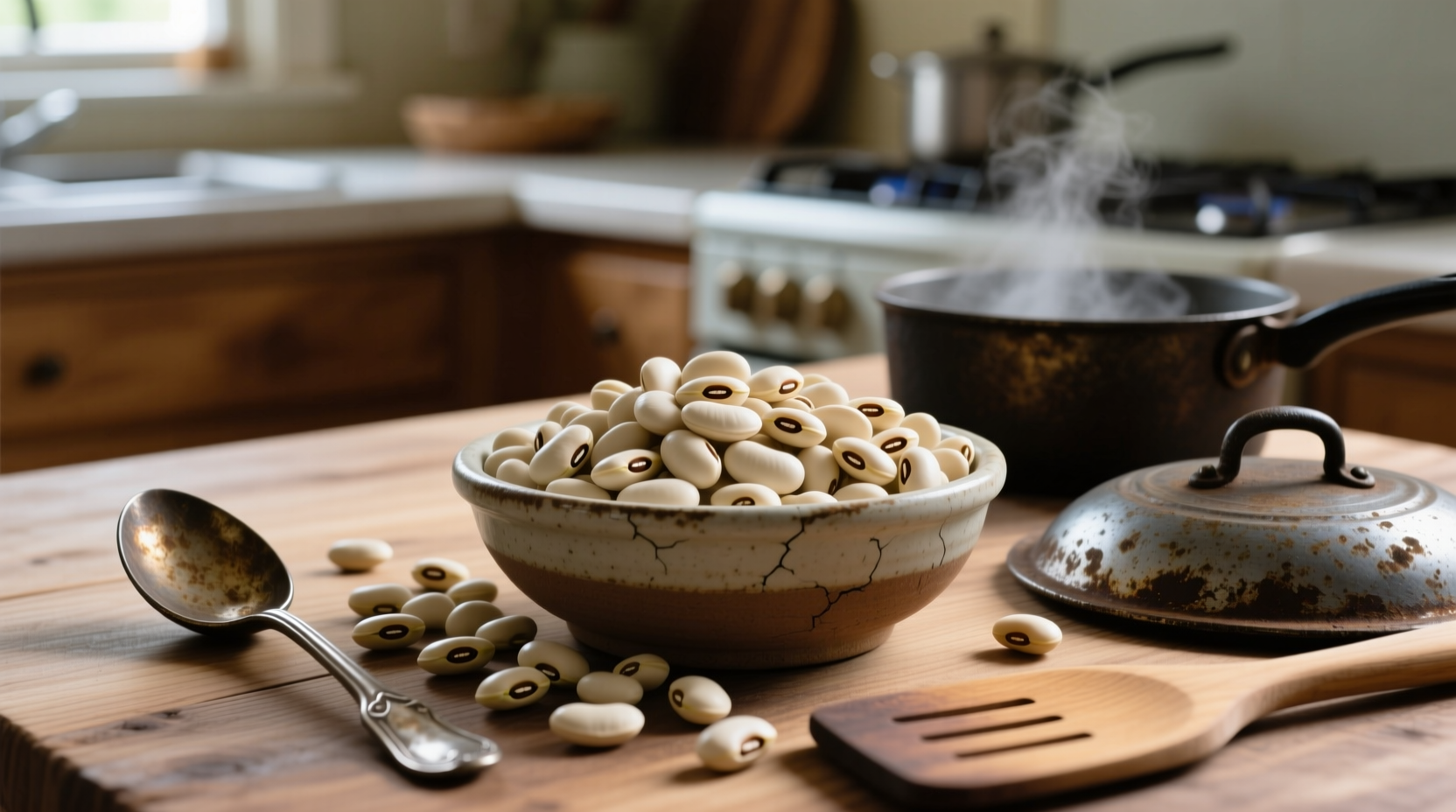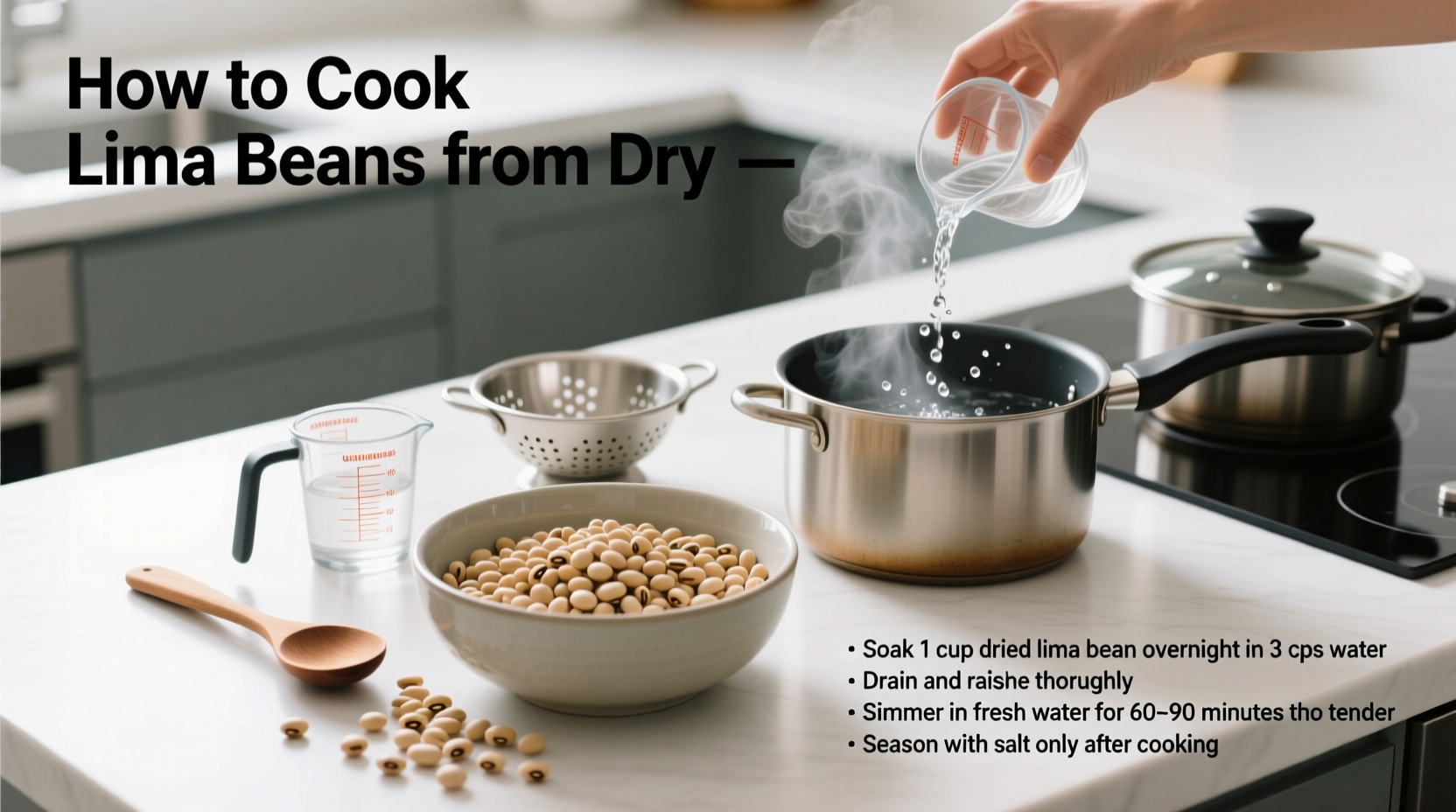Properly cooking dried lima beans requires an overnight soak followed by 45-60 minutes of boiling to eliminate natural toxins and achieve perfect tenderness. This comprehensive guide delivers foolproof methods for stovetop, pressure cooker, and slow cooker preparation with essential food safety information.
Have you ever wondered why your dried lima beans turn out mushy or, worse, potentially unsafe to eat? You're not alone. Many home cooks struggle with properly preparing dried lima beans, not realizing these nutritious legumes contain natural compounds that require specific cooking methods to make them both delicious and safe. In this guide, you'll learn the science-backed techniques for transforming dried lima beans into a creamy, flavorful staple that's packed with protein and fiber.
Why Proper Lima Bean Preparation Matters for Safety
Lima beans naturally contain linamarin, a cyanogenic glycoside that can convert to hydrogen cyanide when improperly prepared. While commercial processing reduces these compounds, home cooks must follow proper preparation methods. According to the U.S. Food and Drug Administration, thorough cooking destroys these compounds, making lima beans completely safe to eat.
| Preparation Method | Soaking Time | Cooking Time | Texture Result |
|---|---|---|---|
| Overnight soak | 8-12 hours | 45-60 minutes | Creamy, intact |
| Quick soak | 1 hour boiling + 1 hour rest | 50-65 minutes | Slightly softer |
| No soak (pressure cooker) | None | 25-30 minutes | Firm but tender |
Your Lima Bean Preparation Checklist
Before you begin cooking, gather these essentials:
- Dried lima beans (1 pound yields about 6 cups cooked)
- Large bowl for soaking
- Colander for draining
- Heavy-bottomed pot or Dutch oven
- Measuring cups and spoons
- Sharp knife and cutting board for aromatics

Step-by-Step: Perfect Lima Beans Every Time
Phase 1: Sorting and Soaking (The Critical First Step)
Sorting removes debris and damaged beans that could affect cooking results. Soaking reduces cooking time and improves digestibility by breaking down complex sugars that cause gas.
- Sort: Spread beans on a light-colored surface and remove any stones, debris, or discolored beans
- Rinse: Place beans in a colander and rinse thoroughly under cold running water
- Choose your soaking method:
- Overnight method (recommended): Cover sorted beans with 3 inches of cold water and soak 8-12 hours
- Quick soak method: Cover beans with water, bring to boil for 2 minutes, remove from heat, cover and let stand 1 hour
- Drain and rinse thoroughly before cooking (never cook beans in soaking water)
Phase 2: Cooking for Safety and Perfect Texture
This is where many home cooks make critical mistakes that compromise both safety and texture. The key is maintaining a rolling boil for the first 10-15 minutes to destroy cyanogenic compounds.
- Place soaked beans in a large pot and cover with fresh water (3 cups water per 1 cup beans)
- Add aromatics like onion, garlic, or bay leaf after the initial boiling phase
- Bring to a full rolling boil and maintain for 10-15 minutes (critical for safety)
- Reduce heat to low, cover partially, and simmer until tender (45-60 minutes)
- Test for doneness: Beans should be creamy but still hold their shape
- Season with salt only in the last 15 minutes of cooking to prevent toughening
Alternative Cooking Methods
Pressure Cooker Method
For time-pressed cooks, the pressure cooker delivers excellent results with unsoaked beans:
- Rinse 1 pound dried beans and place in cooker with 6 cups water
- Cook on high pressure for 25-30 minutes
- Allow natural pressure release for 15 minutes before quick release
- Drain and season as desired
Slow Cooker Method
Requires pre-soaked beans for food safety:
- Add soaked beans and 6 cups fresh water to slow cooker
- Cook on high for 3-4 hours or low for 6-8 hours
- Never cook dried beans from scratch in a slow cooker (inadequate temperature)
Avoid These Common Lima Bean Mistakes
Based on analysis of home cooking forums and culinary expert recommendations, these are the top errors that ruin lima beans:
- Mistake: Cooking in soaking water
Solution: Always drain and rinse after soaking to remove oligosaccharides that cause gas - Mistake: Adding salt too early
Solution: Wait until last 15 minutes of cooking to prevent toughening - Mistake: Insufficient initial boiling
Solution: Maintain rolling boil for first 10-15 minutes for food safety - Mistake: Overcooking
Solution: Check beans every 5-10 minutes after 45 minutes of simmering
Flavor Pairings and Serving Suggestions
Lima beans' mild, buttery flavor pairs beautifully with these complementary ingredients:
- Classic Southern style: Cook with smoked ham hock, onion, and black pepper
- Mediterranean twist: Toss with olive oil, lemon zest, fresh herbs, and feta
- Creamy preparation: Blend with roasted garlic and a splash of cream
- Salad option: Combine with cherry tomatoes, cucumber, and red wine vinaigrette
Storage and Reheating Guidelines
Proper storage maintains both safety and quality:
- Cool cooked beans within 2 hours of cooking
- Store in airtight container with some cooking liquid for up to 5 days
- Freeze in portion-sized containers for up to 6 months
- Reheat gently in saucepan with small amount of water to prevent drying











 浙公网安备
33010002000092号
浙公网安备
33010002000092号 浙B2-20120091-4
浙B2-20120091-4